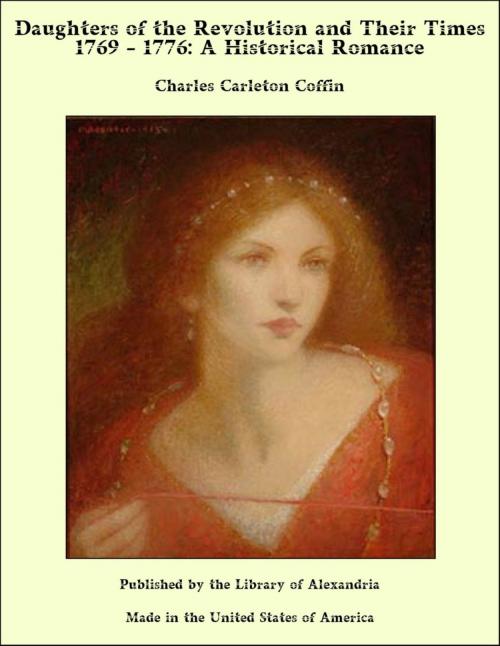Daughters of the Revolution and Their Times 1769 - 1776: A Historical Romance
Nonfiction, Religion & Spirituality, New Age, History, Fiction & Literature| Author: | Charles Carleton Coffin | ISBN: | 9781465602367 |
| Publisher: | Library of Alexandria | Publication: | March 8, 2015 |
| Imprint: | Language: | English |
| Author: | Charles Carleton Coffin |
| ISBN: | 9781465602367 |
| Publisher: | Library of Alexandria |
| Publication: | March 8, 2015 |
| Imprint: | |
| Language: | English |
No period in the history of our country surpasses in interest that immediately preceding and including the beginning of the Revolutionary War. Many volumes have been written setting forth the patriotism and heroism of the fathers of the Republic, but the devotion of the mothers and daughters has received far less attention. Thisvolume is designed, therefore, to portray in some degree their influence in the struggle of the Colonies to attain their independence. The narration of events takes the form of a story—a slight thread of romance being employed, rather than didactic narrative, to more vividly picture the scenes and the parts performed by the actors in the great historic drama. It will not be difficult for the reader to discern between the facts of history and the imaginative parts of the story. Eminent educators have expressed the opinion that history may be more successfully taught through the medium of fiction than by any other form of diction. The novels of Sir Walter Scott, notably “Waverley,” “Ivanhoe,” are cited as presenting pictures of the times more effectively than any purely historic volume. The same may be said of “Uncle Tom’s Cabin,” as illustrating the state of affairs in our own country preceding the War of the Rebellion. It may be questioned whether any work of fiction in the world’s history has been so far-reaching in its influence as that portrayal of the institution of slavery by Mrs. Stowe. Believing that the spirit of the times can be best pictured by the employment of romance, I have adopted that form of narrative. The story opens in the fall of 1769. The Stamp Act had been repealed, and the irritation produced by that act had been allayed. It was a period of quiet and rest. The colonists still regarded themselves as Englishmen and loyal to the crown. Information came that His Majesty George III. was determined to maintain his right to tax the Colonies by imposing an export duty on tea, to be paid by the exporter, who, in turn, would charge it to the consumer. The first resistance to that claim was the agreement of all but six of the merchants of Boston not to import tea from England, and the agreement of their wives and daughters not to drink tea so imported.
No period in the history of our country surpasses in interest that immediately preceding and including the beginning of the Revolutionary War. Many volumes have been written setting forth the patriotism and heroism of the fathers of the Republic, but the devotion of the mothers and daughters has received far less attention. Thisvolume is designed, therefore, to portray in some degree their influence in the struggle of the Colonies to attain their independence. The narration of events takes the form of a story—a slight thread of romance being employed, rather than didactic narrative, to more vividly picture the scenes and the parts performed by the actors in the great historic drama. It will not be difficult for the reader to discern between the facts of history and the imaginative parts of the story. Eminent educators have expressed the opinion that history may be more successfully taught through the medium of fiction than by any other form of diction. The novels of Sir Walter Scott, notably “Waverley,” “Ivanhoe,” are cited as presenting pictures of the times more effectively than any purely historic volume. The same may be said of “Uncle Tom’s Cabin,” as illustrating the state of affairs in our own country preceding the War of the Rebellion. It may be questioned whether any work of fiction in the world’s history has been so far-reaching in its influence as that portrayal of the institution of slavery by Mrs. Stowe. Believing that the spirit of the times can be best pictured by the employment of romance, I have adopted that form of narrative. The story opens in the fall of 1769. The Stamp Act had been repealed, and the irritation produced by that act had been allayed. It was a period of quiet and rest. The colonists still regarded themselves as Englishmen and loyal to the crown. Information came that His Majesty George III. was determined to maintain his right to tax the Colonies by imposing an export duty on tea, to be paid by the exporter, who, in turn, would charge it to the consumer. The first resistance to that claim was the agreement of all but six of the merchants of Boston not to import tea from England, and the agreement of their wives and daughters not to drink tea so imported.















